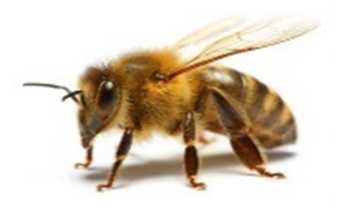
Please note we are meeting on the 3rd Thursday of the month, 1:30 p.m. at the OSU Extension office, 1211 SE Bay Blvd, Newport, OR, unless there are exceptions such as our June meeting (in Waldport) are listed. Our next meeting will be April 17th.
This month’s meeting features Carolyn Breece of the OSU Bee Lab speaking on the important subject of “Bee Nutrition.” She is well known for her engaging Master Beekeeping Program videos and her hosting OSU’s Friday in the Apiary activities.
See our newsletter for the updated calendar and schedule or our full list of presenters and topics for 2025.
Typical bee friendly plants of the central Oregon coast.
The Pacific Northwest Honey Bee Survey is now being taken.
-
-
- It extends mid-March through April.
- After you have had a chance to open your colonies and assess your winter success, please take the time to enter your data in the survey.
- It should take less than 5 minutes.
- This year you can fast track your responses and only provide information on overwintering successes/losses.
- Reports by clubs with 20+ member responses are posted beginning within a month following survey close April 30th
-
Please take the time to enter your data. For more information and links click: PNW Honey Bee Survey
Our next meeting is a great opportunity to pay dues and to place your orders for bee packages and nucs through the club’s bulk order (see newsletter for details) – please recall that April 27th is the hard deadline to place and pay for orders (payment can be made at a meeting or by check to our post office box – see address on the last page of the newsletter)
PRESIDENT’S MESSAGE
By Jeremy Egolf
Spring has clearly sprung here on the Central Coast. Blackberries have leafed out and are pressing up fresh canes. Rhododendrons are blooming. Gardeners blindsided by the early suspension of our cliched overcast and rainy weather are scrambling to start their seedlings. As for us, we’re preparing to mow down the acre or so of invasive Scotch broom once they start blooming, probably at the end of April (we’re a couple weeks behind the actual coast, where the brooms are already in flower).
Annie Marion of the USDA Natural Resources Conservation Service (who spoke to our group last summer) and a couple of her colleagues from the Land and Water Conservation Service gave us the favor of a site visit and we eagerly await their proposals for potential project on our property, particularly restoring native plants demanding the assistance of the live pollinators, both native and domesticated.
Our part-time resident flock of barn swallows showed up early this year – they have for the past few years arrived on April 15, but the first came on April 7, and there are now five – the flock was twenty only two years ago, declining to twelve in 2024, so we hope that more will arrive soon. It’s a matter of some concern.
We remind you again that we’ve arranged for Henry Storch to provide bees for paid members this spring. The deadline to place orders is the April 17th meeting. We’re tentatively targeting May 7 for packages and May 16 for nucs, depending on the usual vagaries of weather and…
We note the Oregon legislature is considering an amendment to HB 2679, restricting use of neonicotinoids (as of this writing, it is still in committee). The amendment would stop sales at garden and home stores but not require persons applying the neonicotinoids to be licensed (and therefore trained) for proper application.
We look forward to seeing you at our next meeting of the year, Thursday, April 17.
Bee Orders: We remind you that we’ve arranged for Henry Storch to provide bees for paid members this spring. The deadline to place orders is the April 17th meeting. We’re tentatively targeting May 7 for packages and May 16 for nucs, depending on the usual vagaries of weather.
Prices are the same.
Packages – $155
Nucs – $180
$10 extra for marked queens
So, to order bees you can bring cash or a check to one of the next several meetings, or mail a check with your order information to the CCBA mailbox. Remember that you must be a 2025 paid member to order bees through CCBA. Last day to order bees will be our April meeting on the 17th.
Email Steve Niles at 2niles@gmail.com if you have any questions.
CCBA’s Queens for sale: This year we also have a limited number (5) queens available through the club for $40 each, first come first serve basis. The queens are from Heitkam’s Queens in Orland, California and were purchased through the OSBA auction last October. Not sure the race of the queens (Italian, Carniolan, etc) as they were donated and we didn’t have a choice. The queens are scheduled to be delivered the week of May 19.
2025 Membership: A reminder that membership fees are now due for 2025 – $15 for individual membership and $25 for a family. Dues can be paid in person at the next meeting, which will be March 20th, or they can be mailed to Central Coast Beekeepers, P.O.Box 1916, Newport, OR, 97365. If your personal information has changed, please fill out a membership application form so we will have current contact information. As a reminder, ordering bees at a discount through the be club is a perk of membership.
We look forward to seeing you at our next meeting of the year, Thursday, April 17.
You will never be solicited by the club or asked for payment (other than annual dues). Be aware of scam emails.
Honey Bee Videos from OSU
Carolyn Breece of OSU Oak Creek Apiary fame has put together a video channel with some great stuff on many aspects of the honey bee world. Check it out.
In the Bees with the OSU Honey Bee Lab